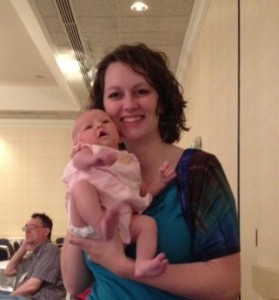This last weekend, I taught a class on character arcs at the LDStorymakers Writers’ Conference. I was really pleased with how it went!
Today I’m sharing the presentation itself as well as links to all the articles I referenced in my presentation. So, here we go!
The Presentation
via Prezi
I’ve left it so that you can zoom in/out on whatever you’d like. (Sorry, no sound effects 
The References
 A lot of the presentation came from my series on character arcs:
A lot of the presentation came from my series on character arcs:
- Character arcs—what about ’em?
- Starting and ending the character arc
- Finding the character arc
- Shaping character arcs—the middle
- Micro character arcs in scenes
- Micro character arcs in sequels
- Are character arcs necessary?
- Character arcs and gender
- Everything you ever wanted to know about character arcs
My character arcs series is also available as a free PDF! (More free writing guides.)
Other awesome references:
Alicia Rasley’s articles on character arcs:
- Changes and Choices: External Action and Internal Reaction by Alicia Rasley
- The Internal Journey by Alicia Rasley (this has the list of some character arcs)
Blog posts on Michael Hauge’s classes:
- The Inner Struggle: Guides for Using Inner Conflict That Make Sense by Janice Hardy
- Making Emotional Journeys and External Plots Play Together by Jami Gold
- An Antidote to Love at First Sight by Jami Gold
- Are These Characters the Perfect Match by Jami Gold
These are the articles I referenced directly, but I studied a lot of great information on character arcs. I’ll be sharing more about character arcs later this week on my newsletter—be sure to join for the latest news & writing resources!
With a brand new baby, attending a conference is always a challenge. My husband was wonderful enough to take care of her at home until after my presentations, and then I took her after that.

Baby’s first writers’ conference! (She was 5.5 weeks.)
It’s always so good to hang out with “my people”: writers!
What do you think? What’s your favorite part of writers’ conferences? Were you at Storymakers? What was your favorite part?
Photo credits: Character arcs—Riccardo Romano



